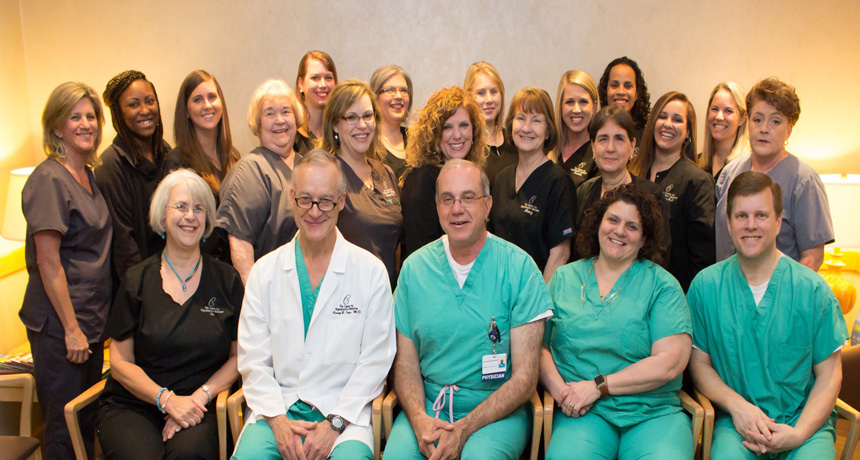In order to successfully treat your fertility issues, we first have to pinpoint the cause. One of the first steps that we will take on this journey together is uncovering the root of your infertility. Once we have a diagnosis, we will create a personalized, detailed treatment plan to address our findings. In this overview we discuss some of the diagnostic procedures that you may encounter on your path to parenthood.
Ovarian Reserve Assessment
This procedure is often performed as part of an initial fertility evaluation and is used to determine the supply of eggs remaining in the ovaries. This assessment consists of blood tests to check hormone levels of follicle stimulating hormone (FSH), estradiol (E2) and antimullerian hormone (AMH) as well as an ultrasound to observe antral follicle count.
Hysterosalpingogram (HSG)
This X-ray allows us to evaluate the fallopian tubes and uterine cavity. In this test a sterile fluid, containing dye for contrast, is injected into the cervix. X-rays are taken to observe the flow for blockages to determine if the fallopian tubes are open. This is a short procedure that may cause mild to moderate cramping.
Saline Infusion Sonohystereogram (SIS)
This ultrasound assesses the shape of the uterus and can detect abnormalities, including fibroids and uterine polyps. It cannot determine if the fallopian tubes are open. In this procedure, sterile fluid is injected into the uterus and a vaginal ultrasound is performed.
Office Hysteroscopy
This procedure allows us to evaluate the uterine cavity and lining and detect polyps and fibroids. It cannot determine if the fallopian tubes are open. With this test a tiny, thin fiber-optic camera is gently inserted into the uterine cavity, allowing the physician to view the uterus. As the name implies, this procedure is done in The Center rather than in a hospital setting.
Follicular Dynamic Ultrasound
Follicular Dynamic Ultrasounds (FD) are used to track follicle growth and to measure the size of and identify the dominant follicle or follicles. It also helps evaluate the timing of ovulation. This test is performed mid-cycle in our office.
Semen Analysis
Because male factor infertility accounts for 40 percent of cases, a semen analysis is recommended for most couples struggling with infertility. This test analyzes the semen to assess the sperm concentration (number), motility (movement), and morphology (shape). These values often fluctuate due to a number of factors. The Center for Reproductive Medicine is the only center that performs semen testing in the Mobile, Alabama and Mississippi Gulf Coast area.














